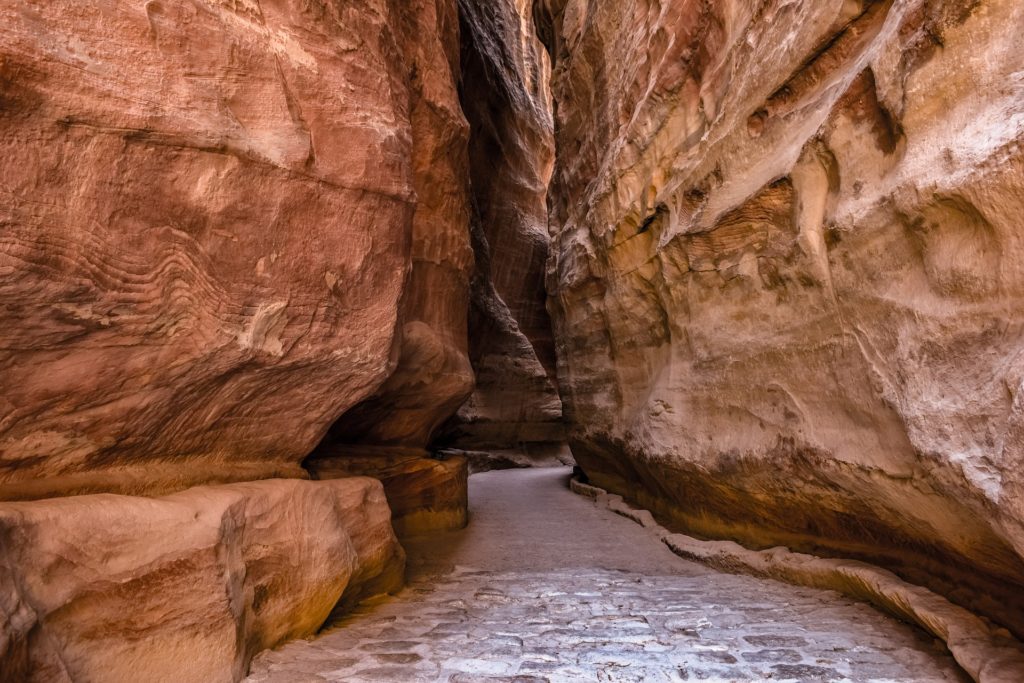By Loay Al-Zube
Introduction: Overview of Petra, Jordan

Overview of the City of Petra in Jordan
Petra is one of the most iconic destinations in Jordan and is known as the “Rose City” or the “Rose Red City” due to its remarkable pink-hued rock formations. Located in the south of the country, Petra is an ancient city that was established around the 6th century BC and is renowned for its remarkable architecture. It is a UNESCO World Heritage Site and attracts thousands of visitors every year who come to explore the city’s breathtaking landscape, fascinating history, and impressive structures.
History of Petra
Petra is an ancient city located in the southern Jordanian desert. It was established as a trading hub and religious center by the Nabataean Arabs in the 6th century BC, and later became a part of the Roman Empire in the 1st century AD. Petra has been inhabited ever since and is now known for its impressive structures, such as the iconic Al-Khazneh (or Treasury) and the Monastery.
What to See and Do in Petra
Petra is home to a wealth of attractions, from ancient ruins and monuments to natural wonders. Visitors can explore the city’s fascinating history by visiting the ruins of the old city, which includes the iconic Al-Khazneh (or Treasury), the Monastery, and the Roman-style theater. Nature lovers can explore the nearby Siq Gorge and Wadi Mudhlim, which offer stunning views of the surrounding desert landscape.
Getting to Petra
Petra is located in the south of Jordan and is accessible by car or bus. It is approximately a three-hour drive from the capital city of Amman. Visitors can also take a flight to the nearby city of Aqaba, which is approximately 40 minutes away.
Where to Stay in Petra
Petra has a variety of accommodation options, from luxury hotels to budget-friendly guesthouses. There are also camping and glamping sites located near the city, which offer visitors a unique opportunity to explore the area in a more intimate way.
Overview Conclusion
Petra is a stunning ancient city located in the south of Jordan. It is a popular tourist destination due to its remarkable architecture and breathtaking views. Visitors can explore the city’s history and natural wonders by visiting the old city, the Siq Gorge, and the nearby Wadi Mudhlim. Petra is easily accessible by car or bus from Amman or by plane from Aqaba, and has a variety of accommodation options to suit all budgets.
Petra, Jordan – History and Cultural Significance

Petra, the “Rose City” of Jordan, is a UNESCO World Heritage Site and one of the most impressive archaeological sites in the world. It has a rich history that goes back to the early Bronze Age, and its fascinating story has captivated travelers for centuries.
Early History of Petra
The earliest known settlement at Petra dates back to the 4th millennium BC, when a small village was established in the area. In the 2nd millennium BC, the Edomites, a Semitic people, settled in the area and built the city of Sela (meaning “rock” in Hebrew). In the 6th century BC, the Nabataeans, an Arab tribe, moved into the area and established their capital at Petra.
The Nabataeans and the Rise of Petra
The Nabataeans were a nomadic people who had migrated from Arabia and settled in the area around Petra. They were adept traders and had established an extensive network of trading routes across the region. As their wealth and prosperity grew, they began to build elaborate monuments and tombs in Petra.
The Nabataeans transformed Petra into a major trading hub and a powerful city-state. They built impressive temples and tombs, many of which can still be seen today. The city was also known for its water management system, which included intricate aqueducts, cisterns, and reservoirs carved into the rock.
Decline of Petra
In 106 AD, the Roman emperor Trajan conquered the Nabataean kingdom and annexed it to the Roman Empire. The city of Petra slowly declined in importance and by the 7th century AD it had been abandoned.
Rediscovery of Petra
Petra was rediscovered in 1812 by Swiss explorer Johann Ludwig Burckhardt. Since then, it has been extensively excavated and studied by archaeologists. Today, it is one of the most visited tourist attractions in Jordan and is a UNESCO World Heritage Site.
Ancient History of Petra Conclusion
Petra is an amazing archaeological site that has a long and fascinating history. Its beautiful monuments, tombs, and temples are a testament to the power and wealth of the Nabataeans. It is also a great example of ancient water management systems and is a must-see for anyone interested in history and archaeology.
Petra as a UNESCO World Heritage Site

Petra, located in the southern region of Jordan, is a UNESCO World Heritage site and one of the most visited ancient cities in the world. The rock-cut architecture of Petra, carved into the sandstone mountain, is an incredible sight to behold. The city has a long history, dating back thousands of years, and was once the capital of the Nabataean Empire.
The Nabataeans were nomadic Arab-Aramaic people who built the city of Petra around the 6th century BC. The city was used as a trading post and became a major point of commerce between the Middle East and the Mediterranean. During the Roman Empire, it was an important stop along the famous Incense Route.
The city flourished until the 7th century AD, when it was abandoned due to a combination of political, social, and economic factors. It was rediscovered in 1812 by Swiss explorer Johann Ludwig Burckhardt, and it has been a popular tourist destination ever since.
Petra’s Design and Architecture
Petra is an architectural wonder, with its impressive rock-cut architecture and its unique blend of Greek, Roman, and Arabic styles. The city is filled with monuments, tombs, temples, and other structures, including the iconic Treasury, the Great Temple, and the Monastery.
The city is also known for its intricate water management system, which was used to collect and distribute water throughout the city. This system is still in use today, and has helped to preserve the city for centuries.
Why Petra is a UNESCO World Heritage Site
Petra is a UNESCO World Heritage Site due to its historical, architectural, and cultural significance. It is an important example of a city built from the rock, and its unique blend of styles makes it a fascinating destination.
In addition, the city’s water management system has helped to preserve the city for centuries, and has made it a major tourist destination. As such, Petra has been given the honor of being one of the most important historical sites in the world.
